Warming drives spread of toxic algae in US, researchers say (Update)
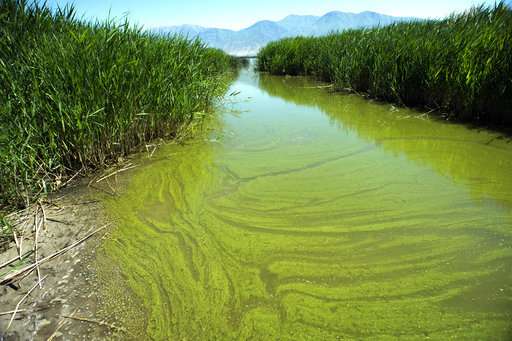
The words blasted to cellphones around Oregon's capital city were ominous: "Civil emergency . prepare for action."
Within half an hour, a second official alert clarified the subject wasn't impending violence but toxins from an algae bloom, detected in Salem's water supply.
Across the U.S., reservoirs that supply drinking water and lakes used for recreation are experiencing similar events with growing frequency. The trend represents another impact of global warming and raises looming questions about the effects on human health, researchers say.
"When water bodies warm up earlier and stay warmer longer ... you increase the number of incidents," said Wayne Carmichael, a retired Wright State University professor specializing in the organisms. "That's just logical, and it's being borne out."
Technically called cyanobacteria, the ancient class of organisms that create the blooms are present nearly everywhere water is found but thrive in warm, still bodies like lakes and ponds. They also create a unique class of toxins, the impact of which on humans is only partly understood.
Long linked to animal deaths, high doses of the toxins in humans can cause liver damage and attack the nervous system. In the largest outbreaks, hundreds have been sickened by blooms in reservoirs and lakes, and officials in some areas now routinely close water bodies used for recreation and post warnings when blooms occur.
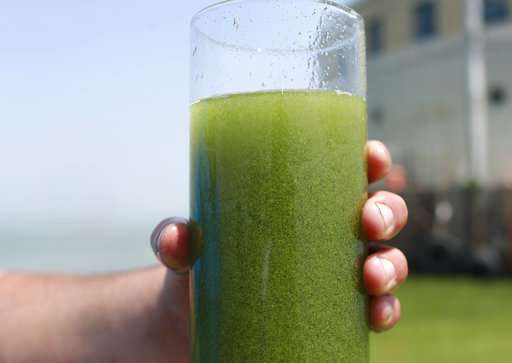
But less is known about exposure at lower doses, especially over the long term.
Small studies have linked exposure to liver cancer—one toxin is classified as a carcinogen, and others have pointed to potential links to neurodegenerative disease. But definitively proving those links would require larger studies, said Carmichael, who helped the World Health Organization set the first safe exposure standards for the toxins.
"It's absolutely certain in my mind that warming temperatures are going to end up causing more of these algal blooms," said Steven Chapra, an environmental engineering professor at Tufts University.
Chapra led a team including scientists from the Massachusetts Institute of Technology and the U.S. Environmental Protection Agency in one of the most comprehensive studies of the interplay between global warming and the blooms, published in 2017.

Because they prefer warm water, higher summer temperatures and more frequent heat waves help the organisms. More frequent droughts also cause reservoirs to be shallower in summer, causing them to warm faster.
And more intense rainstorms, also conclusively linked to climate change, can wash more nutrients into lakes and reservoirs, especially from farms where nitrogen and phosphorous-rich fertilizers are used, Chapra said.
In Utah, a 2016 algae bloom in a recreational-use lake sickened more than 100. When the story made national headlines, other states reached out.
"We started getting calls from other health departments all over the country saying, 'Hey, we're dealing with an algal bloom in a lake that has never ever had one before,'" said Aislynn Tolman-Hill, Utah County Health Department spokeswoman.

Officials only recently started carefully logging the blooms, but they seem to be becoming more intense, said Ben Holcomb, a biologist for Utah's environmental agency. "They're starting earlier, they're lasting longer, and their peaks seem to be getting bigger," Holcomb said. "I don't think any state is isolated."
In Lake Erie, a major bloom in 2014 caused authorities to warn against drinking tap water in Toledo, Ohio, for more than two days, cutting off the main water source for more than 400,000 people.
Now blooms happen every year in Utah and Ohio. Officials in both states say they've largely been able to stop them from toxifying drinking water. But the blooms can still sicken people and pets that go in the water, and often hit recreation businesses that depend on lake access.
Other blooms, including flare-ups affecting drinking water, have been logged in recent years in New York, Florida and California.
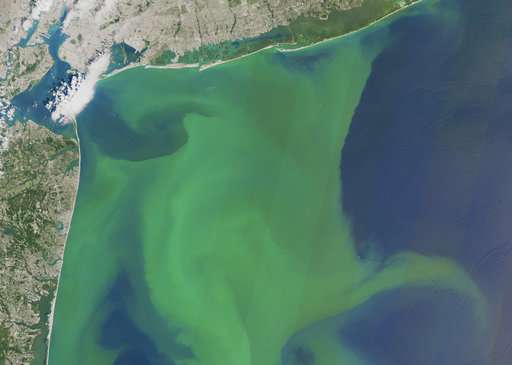
In Oregon, officials lifted Salem's drinking water advisory after several days, but then had to re-issue the warning. The water supply serves a population of just over 150,000 in the city, along with residents outside city limits.
Officials also warned that dozens of other water supplies could be vulnerable, and indeed, when workers from the city of Cottage Grove inspected another reservoir, they found a bloom, according to a report by Oregon Public Broadcasting.
Testing for the blooms isn't required by either federal or state law, officials noted.
Researchers say that needs to change because blooms are likely to become more common, including in states where low temperatures previously provided a buffer against them.

"These things like you're seeing in Lake Erie and in Oregon are kind of like the canary in the coal mine," said Chapra, the Tufts researcher.
"It's going to get worse, and it's going to get worse in a big way."
-

In this May 29, 2018 file photo, Floyd Oar of Salem loads his SUV with water purchased at WinCo in Albany, Ore. Oar purchased water for himself and his grown children's families who all reside in the Salem area. For several weeks the residents of Salem, Ore., were told the area's tap water was unsafe for the young, elderly or ill because of toxic algae blooms in the state capital's water source. (Mark Ylen/Albany Democrat-Herald via AP) -
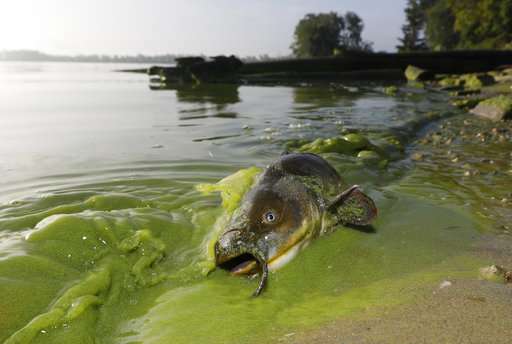
In this Sept. 20, 2017 file photo, a catfish appears on the shoreline in the algae-filled waters of North Toledo, Ohio. Long linked to animal deaths, high doses of the toxins in humans can cause liver damage and attack the nervous system. In the largest outbreaks, hundreds have been sickened by blooms in reservoirs and lakes, and officials in some areas now routinely close bodies of water used for recreation and post warnings when blooms occur. (Andy Morrison/The Blade via AP, File) -
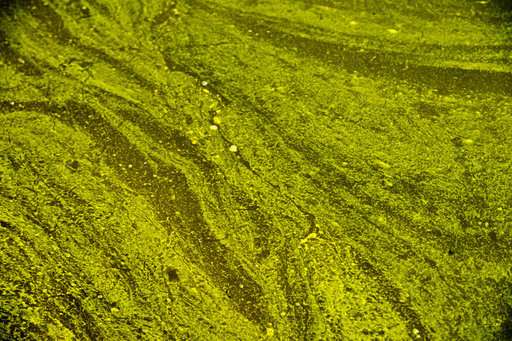
In this June 12, 2018, file photo, water experts are urging visitors to keep themselves, their pets and other animals out of parts of Utah Lake, after detecting a potentially toxic blue-green algal bloom in Provo Bay in Provo, Utah. Researchers and officials across the country say increasingly frequent toxic algae blooms are another bi-product of global warming. They point to looming questions about their effects on human health.(Rick Egan/The Salt Lake Tribune via AP, File) -
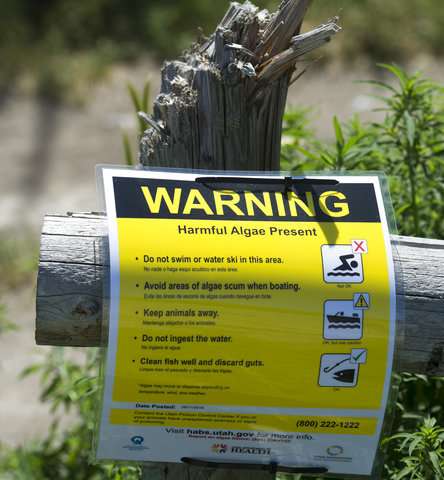
In this Tuesday, June 12, 2018, file photo, warning signs near Provo Bay worn of harmful algae on parts of Utah Lake. Long linked to animal deaths, high doses of the toxins in humans can cause liver damage and attack the nervous system. In the largest outbreaks, hundreds have been sickened by blooms in reservoirs and lakes, and officials in some areas now routinely close bodies of water used for recreation and post warnings when blooms occur. (Rick Egan/The Salt Lake Tribune via AP, File)
© 2018 The Associated Press. All rights reserved.




















